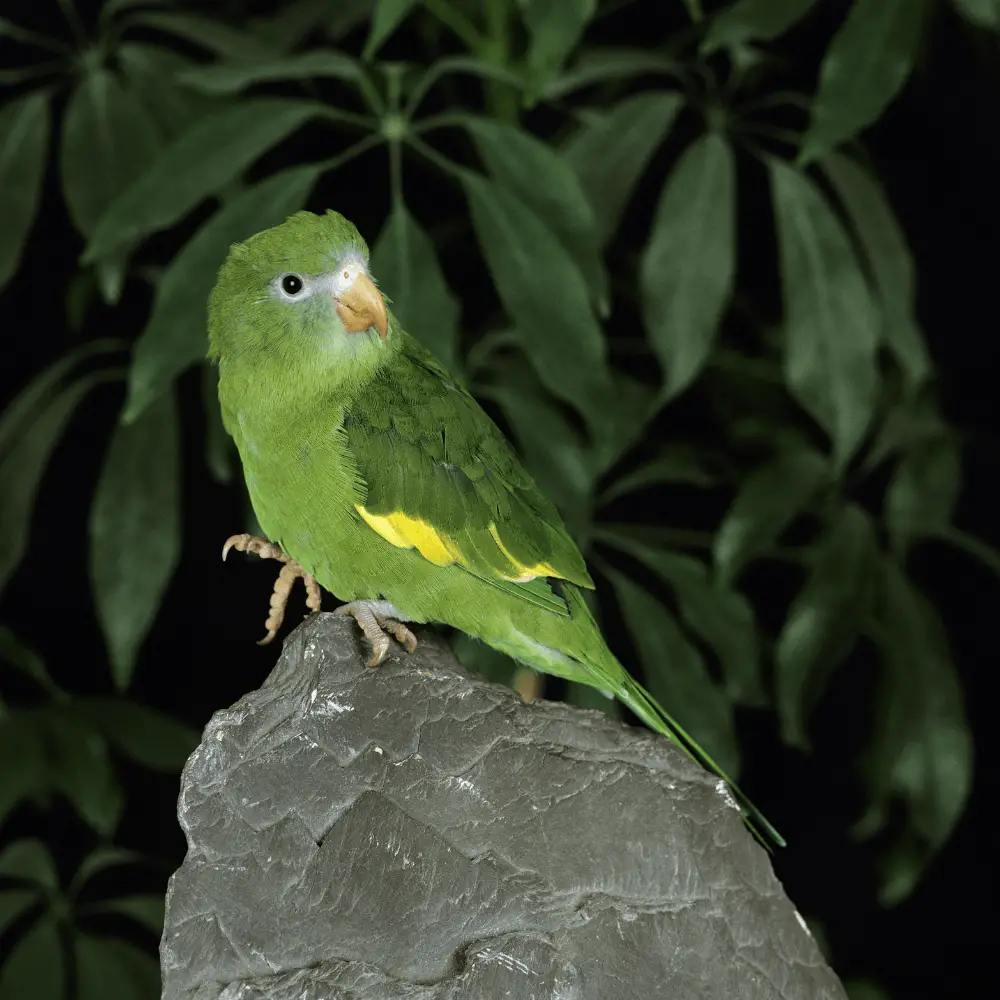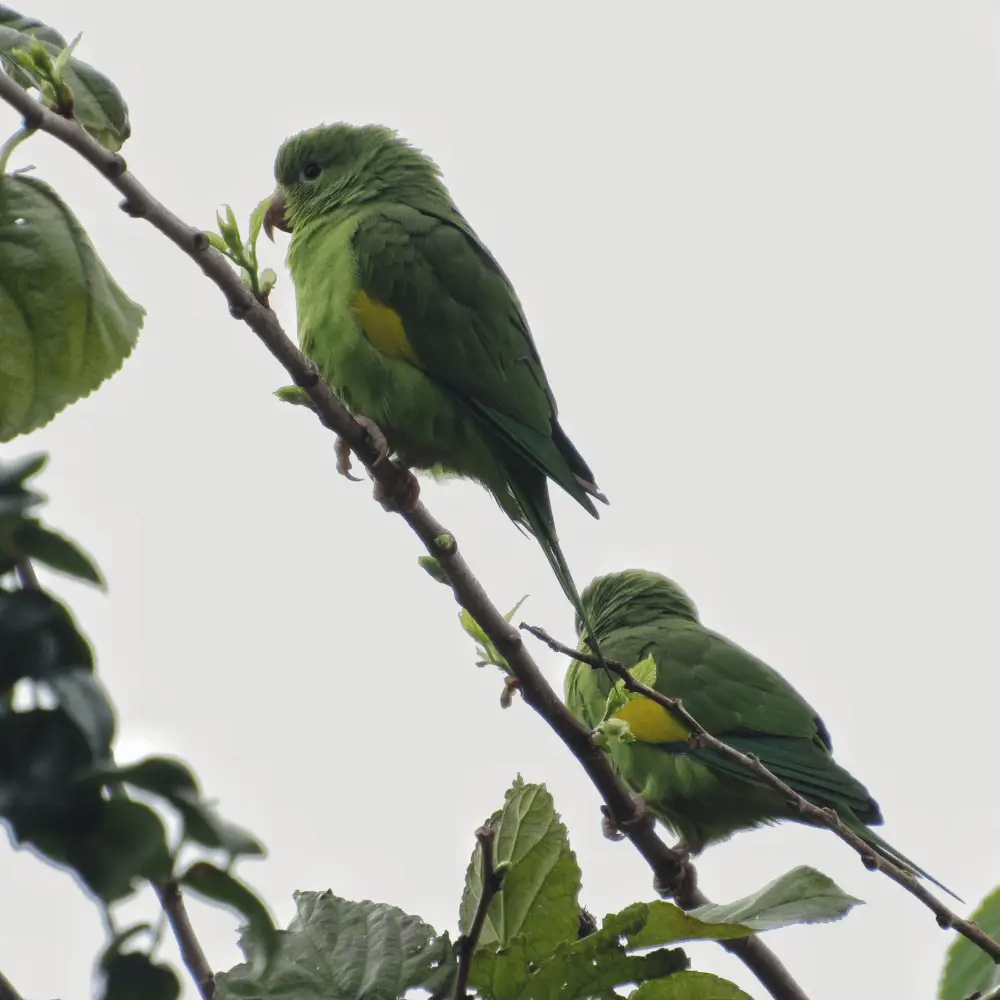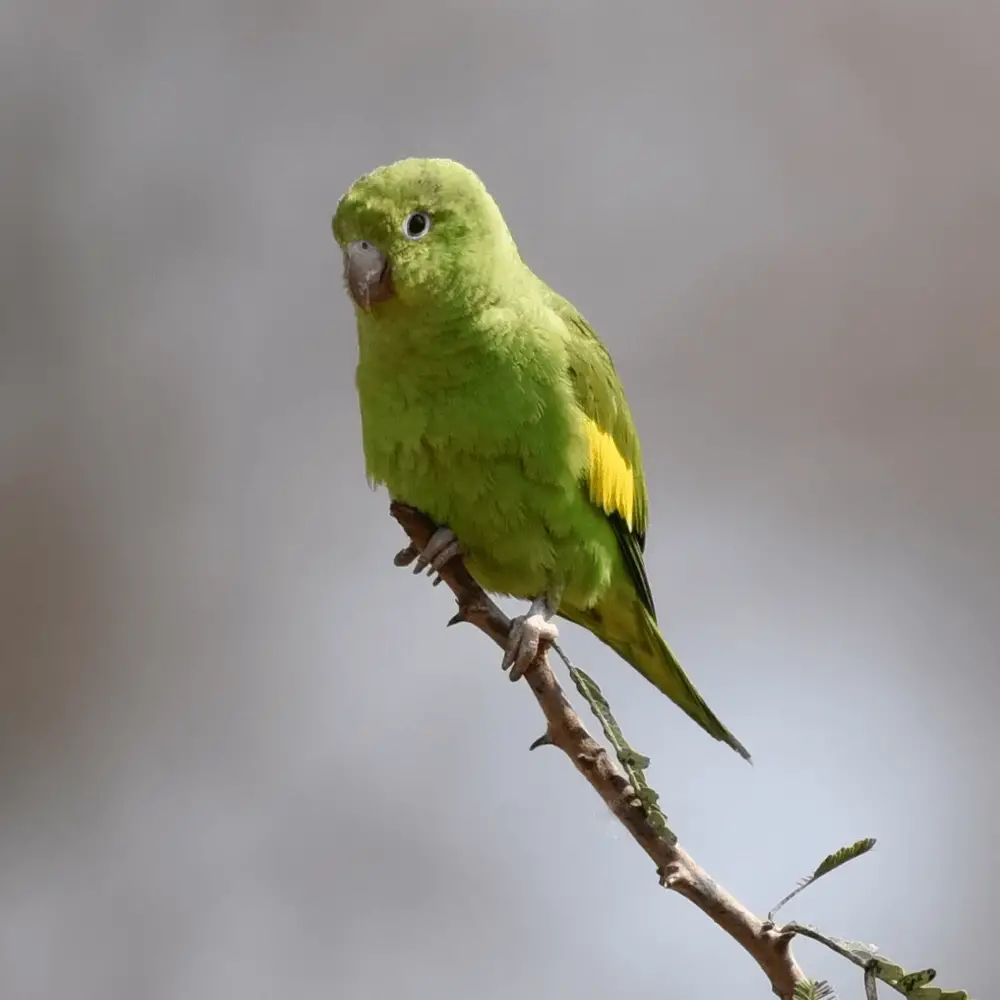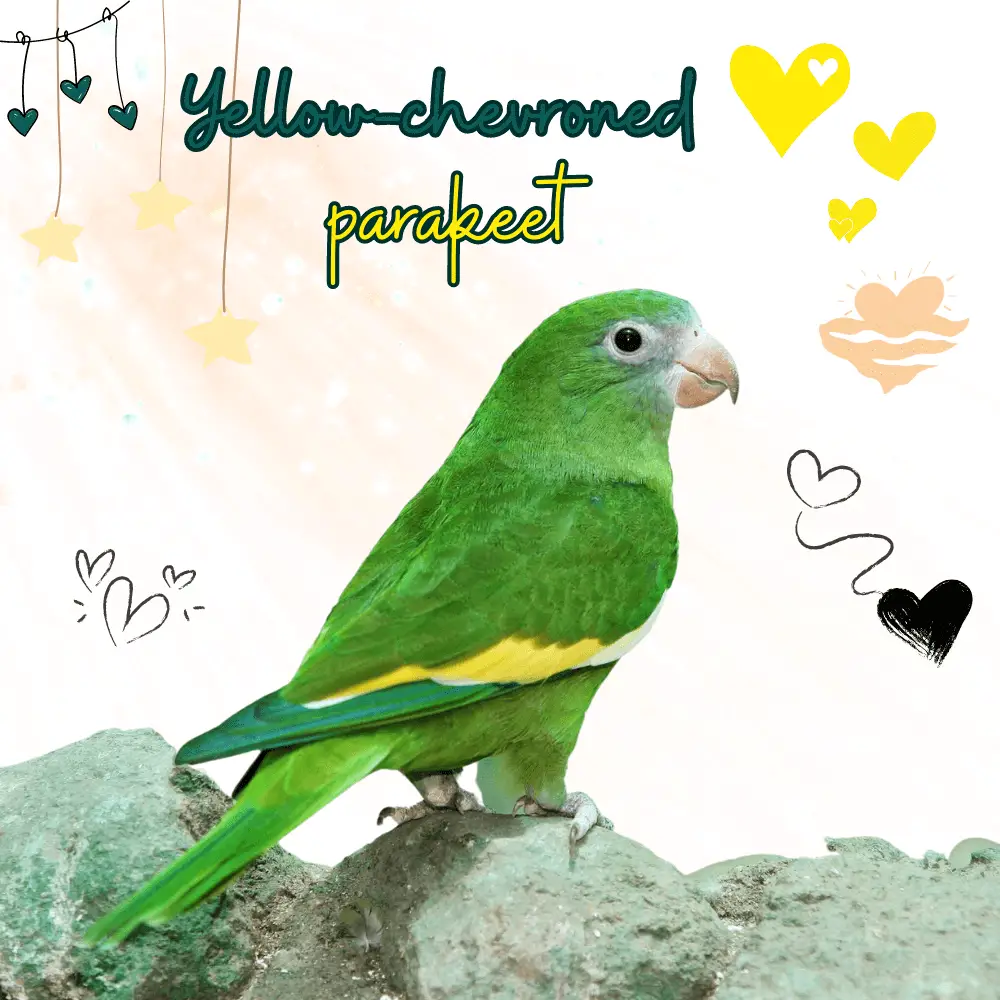Yellow-chevroned parakeet: 20-25cm. length and 72 grams. The wings are of a slightly darker green, with a yellow border, visible when the wings remain curved or when the bird is in flight. Their peak, in the shape of a hook, is orange-brown, and their legs Yes feet, pinkish gray. The dark circles They are creamy white and dark brown eyes.
It is closely related to the Varied-winged Parakeet (Brotogeris versicolurus). In fact, it was considered conspecific (belonging or belonging to the same species) until 1997.
Females are sexually dimorphic and must not be sexed, either surgically or by DNA.
The immature are similar to adults but have a shorter tail and a darker brown bill.
Taxonomic note :
Until 1997, some taxonomists considered the Variegated-winged Parakeet and the Yellow-chevroned parakeet to belong to the same species. Although the Yellow-chevroned parakeet has the same secret secondary yellow feathers that can be seen in the Varied-winged Parakeet – no white in the primary wing feathers.
Subspecies

Brotogeris chiriri behni
- ( Neumann, 1931) – Similar to the nominate species, except that they are slightly larger; the body lacks green-yellow dye.
- ( Neumann, 1931) – Center of Bolivia northwest of Argentina, in Salta.
Brotogeris chiriri chiriri
- ( Vieillot , 1818) – Nominal .
Distribution
Distributed in the interior of eastern Brazil to the east of Bolivia, Paraguay, and north of Argentina, in Formosa, Chaco, Missions, and north of Courants. Introduced populations in Miami, Florida Yes California.
Reproduction

Usually nest in tree cavities or in tree termite nests.
once a nest has been located and correctly “prepared” the couple, is carried out the setting, between 4 Yes 5 eggs. after breeding, the Yellow-chevroned parakeet forms large communal huts until the next breeding season.
Food

In their natural habitat, feed on seeds (including outbreaks), fruits, berries and figs, and flowers. Also consume nectar, insects, and their larvae. Often they are seen visiting barreiros (areas where there is mineral-rich soil) and the banks of rivers to feed on the soil.
Endangered

• Current IUCN Red List Category: Least Concern.
• Demographic trend: Stable.
The Rationale for the Red List Category
This species has a very wide range Yes, therefore, it does not approach the vulnerability thresholds according to the size range criteria (extension <20,000 km2 combined with a decreasing or fluctuating range, extensión / calidad de hábitat or Tamaño de población y un pequeño número De lugares o fragmentación severa).
The population trend seems stable Yes, therefore, the species is not approaching the vulnerable thresholds according to the population trend criteria ( > 30% decrease of more than ten years or three generations).
Population size has not been quantified, but it is not believed to be close to the thresholds for vulnerable people under the population size criterion (<10,000 mature individuals with an estimated continuo descent >10% in ten years or three generations or a population structure). population).
The size of the global population has not been quantified, but this species is described as “ fairly common ” ( Stotz et to the., 1996 ).
The population is suspected to be stable in the absence of evidence of reduction or serious threat.
Yellow-chevroned parakeet in captivity

Currently, it is Rare.
From the late sixties to mid-seventies, over 260,000 of these were imported parakeets from South America for the pet trade. At that time, the Yellow-chevroned parakeet was the most imported parrot.
They settled in California ( Los Angeles, San Francisco ) self-governing Yellow-chevroned parakeet populations released or escaped; populations also in Florida (Miami), as well as Connecticut Y New York City.
The Chirirí kitten appears to be better suited to its adopted habitat than its closely related cousin, the Ruff-winged Parakeet (Brotogeris versicolurus).
The Yellow-chevroned parakeet has decreased considerably since the beginning of the 80s, while the Yellow-chevroned parakeet has established itself in different habitats.
In 2002, the Yellow-chevroned parakeet population in the Los Angeles, California area was estimated at 400 individuals. In the. Florida, They thrived more than any other place in the United States – there were huge herds, several hundred of them. The species is also quite established in downtown Rio de Janeiro, Brazil, from which it has also been introduced.

